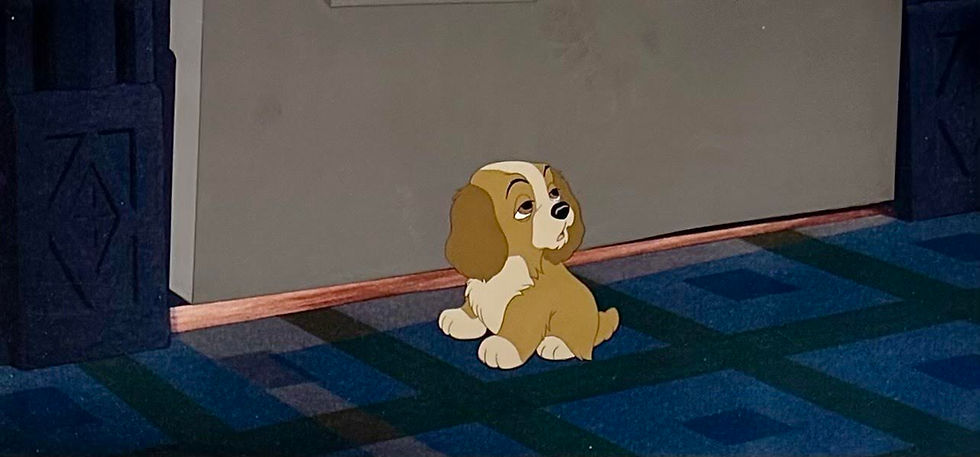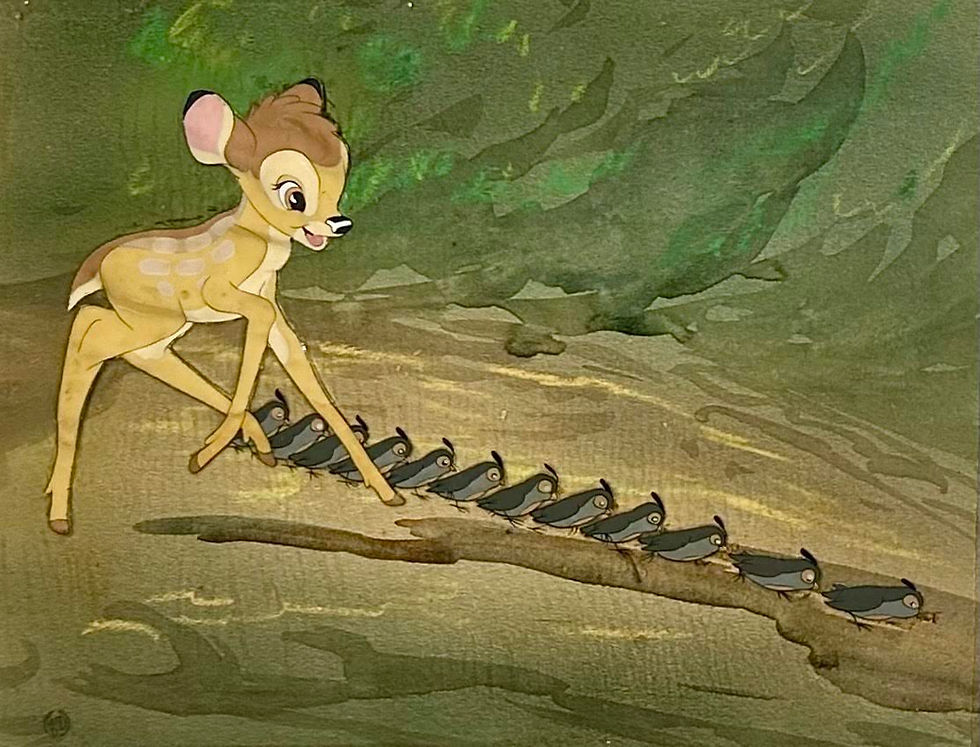Original Production Animation Cel of Doc from "Snow White and the Seven Dwarfs," 1937
- Untitled Art Gallery

- Apr 1, 2020
- 3 min read

Original hand painted and hand inked production animation cel of Doc set on an airbrushed wood veneer Courvoisier background from "Snow White and the Seven Dwarfs," 1937, Walt Disney Studios; Partial Courvoisier label verso; Size - Doc: 3 x 3 3/4", Image 5 1/2 x 5 1/4", Mat 14 x 12"; Single matted.
Development on Snow White and the Seven Dwarfs began in early 1934, and by June Walt Disney announced to The New York Times the production of his first feature, to be released under Walt Disney Productions. Before Snow White and the Seven Dwarfs, the Disney studio had been primarily involved in the production of animated short subjects in the Mickey Mouse and Silly Symphonies series. However, Disney hoped to expand his studio's prestige and revenues by moving into features, and he estimated that Snow White and the Seven Dwarfs could be produced for a budget of $250,000 (this was ten times the budget of an average Silly Symphony). Snow White and the Seven Dwarfs was to be the first full-length cel animated feature in motion picture history, and as such Walt Disney had to fight to get the film produced. Both his brother and business partner Roy Disney, as well as his wife Lillian attempted to talk him out of it. The Hollywood movie industry mockingly referred to the film, while is was in production, as "Disney's Folly." Disney ended up having to mortgage his house to help finance the film's production, which would eventually ran up to a total cost of $1,488,422.74; an absolutely massive sum for a feature film in 1937!
Although the initial concept designing of the dwarfs was relatively easy for the Walt Disney animation department, the actual animating of them proved to be difficult. The animators, already finding human figures difficult to animate, now had to animate dwarfed human figures. The great Disney animator Vladimir Tytla noted that the dwarfs should walk with a swing to their hips, and Fred Moore commented that they had to move a little more quickly in order to keep up with the other human characters. Doc was not present in the original November 1935 story outline of the film as referenced by Robert D. Field in "The Art of Walt Disney." However, several months later his role in the film and his relationship with Grumpy was well established. Walt Disney commented that Doc's flustered personality should be such that he never knew quite where he is without one of his fellow dwarfs reminding him. Radio comedian Roy Atwell, who used stammering and mixed-up language in his act, was chosen to be the voice of Doc. Various Walt Disney artists were involved in the animation of Doc throughout the film including: Vladimir Tytl, Fred Moore, Shamus Culhane, Les Clark, and Ward Kimball. This is an absolutely wonderful original hand painted and hand inked production cel of Doc set on an airbrushed (used to create the shadow and the dwarf name) wood veneer Courvoisier background. The Courvoisier portrait series from Snow White is highly desired by collectors for their beauty. Courvoisier Galleries, the first to recognize the artistic value to the newly emerging animation art form, in the 1930s and 40s created the series to sell to the public. All the characters from the film were made for the series including The Seven Dwarfs, Snow White, The Huntsman, The Old Hag, and The Evil Queen. The character cels were trimmed and applied to the wood veneer background. This is a very nice portrait of Doc with both eyes open, smiling, wearing his glasses, and his hands are out in front of him.
#SnowWhite #Doc #Bashful #Dopey #Happy #Sneezy #Sleepy #Grumpy #Disney #WaltDisney #PintoColvig #VladimirTytla #BillTytla #MarcDavis #GrimNatwick #animation #FrankChurchill #HamiltonLuske #AdrianaCaselotti #animationdrawing #productiondrawing #animationart #untitledartgallery #cel #CourvoisierGalleries #CourvoisierGallery #Courvoisier #Witch #EvilQueen #OldHag #Huntsman #animationcel #sevendwarfs #dwarfs #ArtBabbit #OllieJohnston #FrankThomas #ShamusCulhane #FredMoore #LucilleLaVerne #KeySetup #productionbackground #RadioCityMusicHall #JoeGrant #ThePrince #MiltKahl






